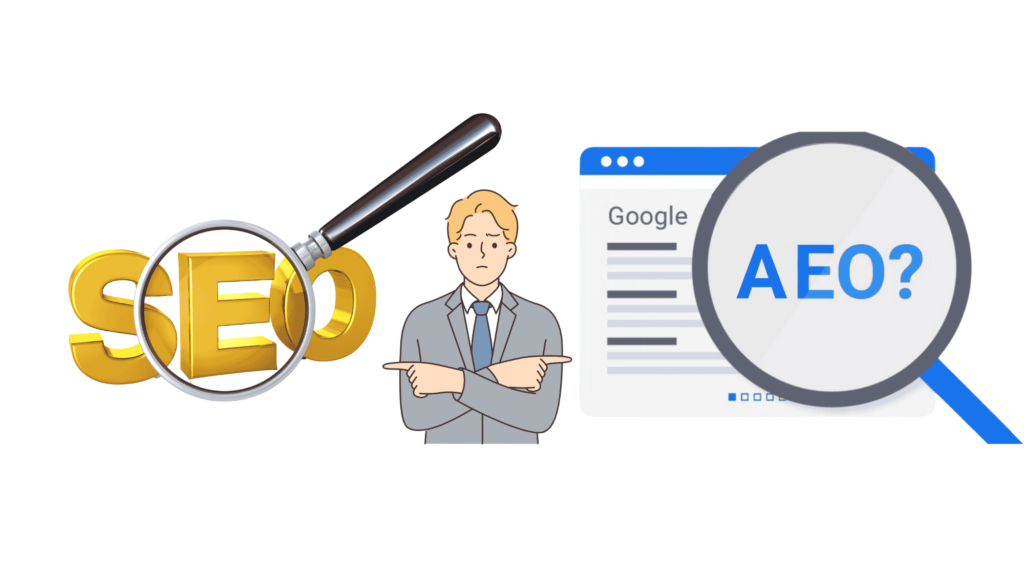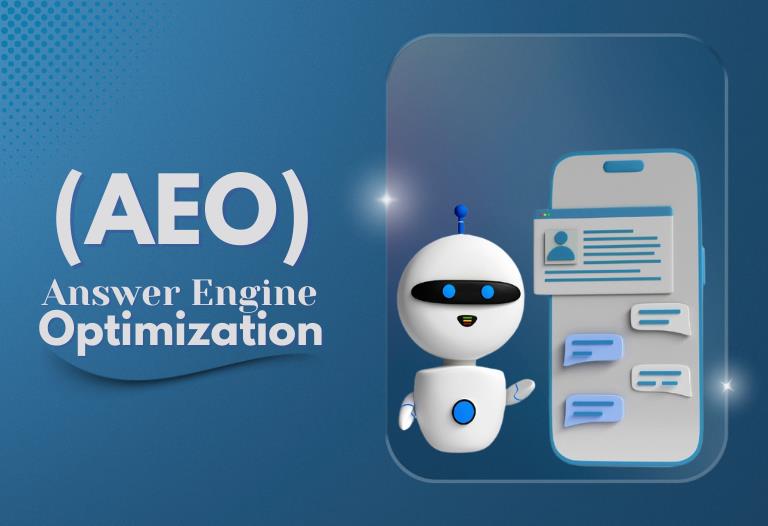Over the last 20 years, search has changed significantly. Adding keywords to webpages to make them show up higher in search results was the main focus of SEO in the early 2000s. Later, the emphasis switched to mobile-first indexing, high-quality content, and user experience. Answer Engine Optimization (AEO), a tactic created for search systems that offer conversational, direct responses instead of merely a list of links, is entering a new era today.
Users now anticipate quick, precise, and conversational responses, thanks to Google's featured snippets and AI-powered tools like ChatGPT, Perplexity AI, and Bing Chat. Optimizing your content for these systems' easy interpretation, retrieval, and presentation is known as search engine optimization (AEO).
Answer Engine Optimization (AEO): What is it?
The process of producing and organizing content so that answer engines and AI assistants can comprehend it and provide it as direct responses to user inquiries is known as answer engine optimization, or AEO.
AEO prioritizes being the solution, as opposed to traditional SEO, which concentrates on ranking pages.
For instance:
Conventional SEO: Ten blue links appear when a user searches for "what is digital branding?"
AEO: When a user poses the same query, ChatGPT, Google, or Bing provide a direct response with optimized content, frequently referencing the original source.
To put it briefly, visibility in conversational search environments is the focus of AEO.

What Makes AEO Vital?
AI-driven search is expanding: ChatGPT, Bing Chat, and Google's SGE (Search Generative Experience) are some of the tools that are transforming the way people find information.
Users want answers right away: They don't want to click through several pages; they want answers right away.
Brand authority: An AI gains credibility and trust if it regularly cites your company as the source.
Competitive advantage: As traditional SEO techniques lose traction, early adopters of AEO will be distinguished.
Fundamentals of AEO
1. Clearly Respond to User Intent
Direct, succinct responses are given priority by search engines and AI tools. Give succinct, understandable definitions first, then go into great detail.
For example:
What is AEO, please?
A: Optimizing content to be directly retrieved and displayed as answers by AI-powered search engines is known as answer engine optimization, or AEO.
2. Make Use of Organized Data
Search engines can better comprehend the context of your content when you use schema markup (FAQ, How-To, Product, Article). This increases the likelihood that your content will appear in AI summaries or featured snippets.
3. Produce Content That Is Rich in FAQs
Including FAQs in your content increases visibility because answer engines prefer question-answer formats.
4. Make Conversational Queries Your First Choice
Compared to traditional keywords, voice and AI search queries are longer and more conversational. For example:
"SEO benefits" was the old search term.
"What are the main benefits of SEO for small businesses in 2025?" is a new search query.
5. Establish Credibility and Authority
Credible sources are preferred by AI engines. This implies:
• releasing content that has been thoroughly investigated and verified.
• constructing backlinks from reliable websites.
• preserving current, new information.
How to Successfully Apply AEO
1. Snippets of the target feature
The first example of answer-focused results is Google's featured snippets. To apprehend them:
• For definitions, use brief paragraphs (40–60 words).
• Create detailed instructions for "how-to" questions.
• Include Q&A sections in your blogs.
2. Produce Content and FAQ Pages
Publishing content that is rich in frequently asked questions (FAQs) makes your website more answer-friendly because AI thrives on direct question-answer pairs.
3. Make Use of Conversational, Natural Language
Write as if you were asking voice assistants or artificial intelligence tools questions out loud. Steer clear of jargon whenever you can.
4. Maintain Up-to-Date Content
Timely and accurate content is given priority by answer engines. Posting frequently improves your chances of getting cited.
5. Integrate AEO and SEO
Conventional SEO is still important. For AI systems to even consider you, you need technical optimization, backlinks, and authority. However, the emphasis should move to formatting that is answer-ready.
Real-World AEO Examples
Example Google Snippet query: "What is a CRM?" → Google displays a brief definition taken straight from a webpage.
Example Voice Assistant Inquiry: "Hey Siri, tell me about digital branding." → An answer is read by Siri from a website that has been optimized with structured Q&A.
Example of an AI-Powered Search Question on Bing AI or ChatGPT: "What is the difference between SEO and AEO?" → Citing optimized content, the AI provides a direct response.
AEO's Advantages for Companies
• Increased visibility: On all platforms, your brand is now the go-to response.
• Credibility and trust: are increased when one's name appears in AI-generated responses.
• Enhanced engagement: Users are more inclined to delve deeper when they receive prompt responses.
• Marketing that is future-proof: Early adoption guarantees relevance in the upcoming search wave.
AEO's Challenges
• Opaque selection procedure: AI systems don't always reveal the methods they use to select responses.
• Limited attribution: Some responses produced by AI lack or only partially cite sources.
• Content saturation: Competition will rise as more companies use AEO.
• Regular updates: The rapid evolution of AI and search algorithms necessitates constant adaptation.
AEO's Future
AEO will become more and more important in digital marketing in the future. Among the most likely developments are:
• Answer-first indexing: Content formatted as direct answers is given priority by search engines.
• Paid answer placements: Like advertisements, brands may soon have to pay to appear in AI-generated results.
• Integration with Generative Engine Optimization (GEO): AEO will combine with more comprehensive approaches to generative AI content optimization.
• AEO analytics tools: There will be platforms to track the frequency and location of usage of your content in AI responses.
Conclusion
In the era of artificial intelligence, SEO naturally evolved into Answer Engine Optimization (AEO). Businesses must now optimize for visibility in answer-first search environments rather than just competing for ranking positions.
Businesses can make sure their content is not only found but also used as the definitive answer by using schema markup, maintaining authority, and offering answers that are conversational, clear, and structured.
AEO is essential—it's the future of digital visibility in a world where consumers expect real-time, accurate, and reliable information.




